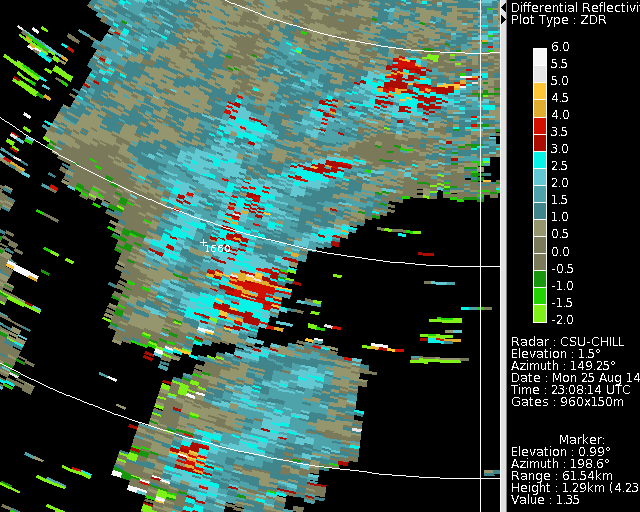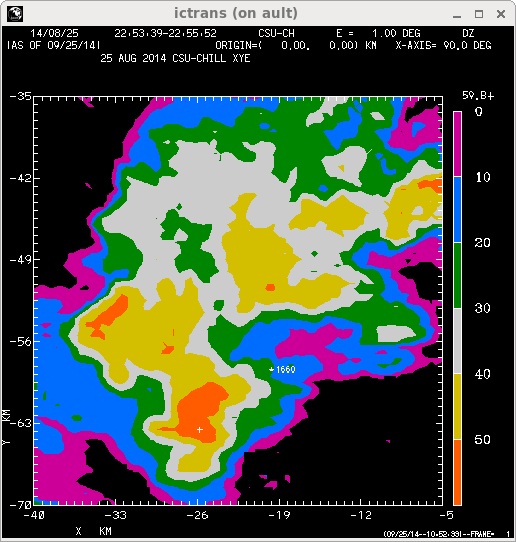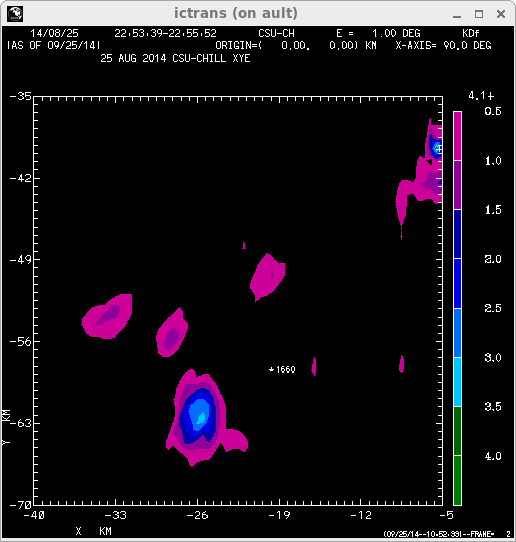DPWX/Passage of a high Kdp area over a tipping bucket rain gauge: 25 August 2014
Overview
During test operations of the CSU-CHILL radar on the afternoon of 25 August 2014, the core of a strong thunderstorm passed over a tipping bucket rain gauge operated by the Denver Urban Drainage and Flood Control District (UDFCD). Peak one-way specific differential propagation phase () values of ~8 deg / km, indicitave of very high rain rates, were recorded in the immediate vicinity of the gauge. The bucket tip data was used to provide an independed measurement of the storm's rain rates.
Reflectivity loop
The following loop shows the time sequence of 1.0 deg elevation PPI sweep data from the CSU-CHILL radar. The original polar coordinate gate data have been interpolated to a 500m horizontal mesh Cartesian grid on the PPI surface using the NCAR Radx2Grid program. The gridded data has been plotted using the CEDRIC software developed at NCAR. The location of UDFCD gauge number 1660 has been added as a base map point. The reflectivity at the gauge peaked at levels above 60 dBZ around 2307 UTC:
|
|
||
|
loop
The specific differential propagation phase was estimated from the basic differential propagation range profile using the methods of Wange and Chandrasekar (2009). The resultant polar coordinate data field was then interpolated using the same procedures that were applied to the reflectivity data. As shown in the following image loop, values briefly reached 6 - 8 deg / km at gauge 1660:
|
|
||
|
UDFCD gauge 1660 data
The following two plots show the time history of the reflectivity and values extracted from the Cartesian grid point that was closest to gauge 1660. The series of red dots indicate the times associated with the individual bucket tips. The steepness of the tip vs. time trend gives the gauge-defined rain rate. Two gray reference lines indicating rain rates of 150 and 180 mm / hr have been added at selected points in the gauge data histories. The rain gauge data values may contain a time error as precipitation began ~7 minutes after reflectivities of 45 dBZ appeared over the gauge. (The time required for the raindrops to descend from the radar beam height of ~XX m to the ground level gauge also contributes to this delay):
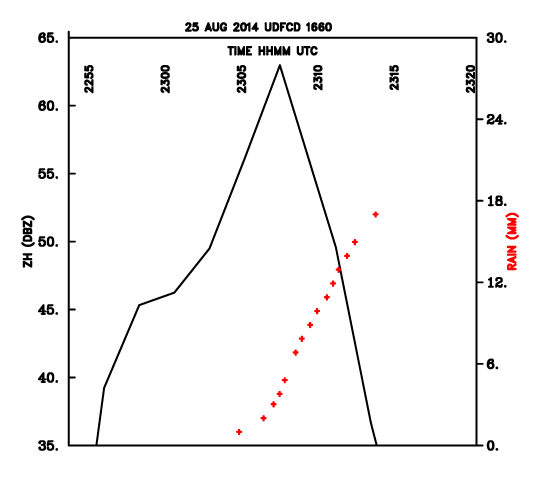
The next plot combines the time history with the same bucket tip time points. The highest value in the time series was ~8 deg / km. Using Eq. 8.14 in the Bringi and Chandrasekar text, rain rates of 237 to 297 mm / hr should be associated at this high magnitude. The maximum gauge-indicated rain rate approached 200 mm / hr:
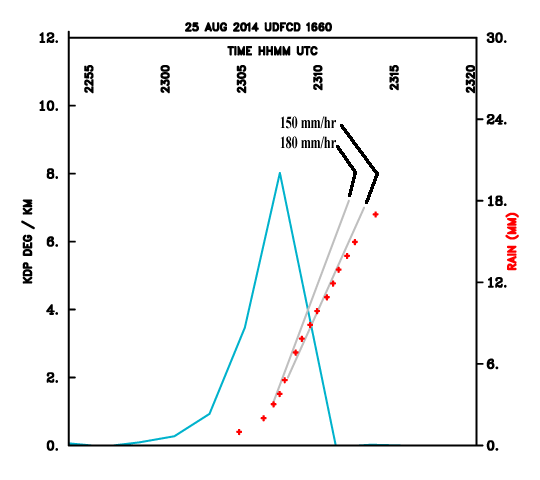
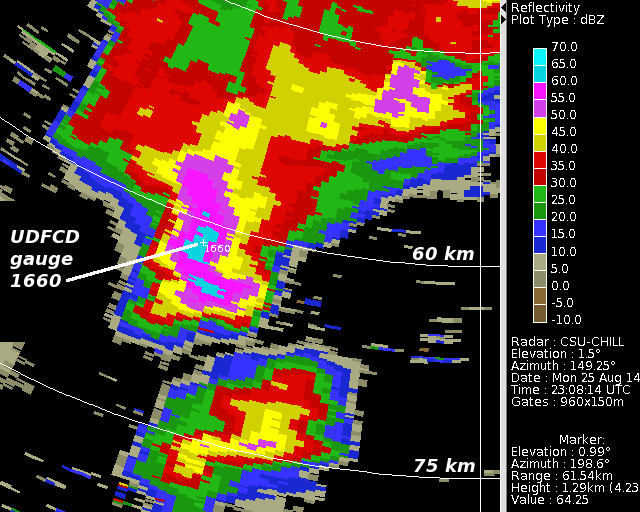
Hail indications
If hailstones collect in the entrance funnel of the rain gauge, the rain flow rate into the downstream tipping mechanism can be reduced. The following two plots show the reflectivity and differential reflectivity () data at the peak time. The reduced values in the echo core relative to the immediately surrounding areas strongly suggests that quasi-spherical hailstones were mixed in with the rain. An accumulation of hailstones in the inlet of gauge 1660 could have contributed to an undersampling of the true rain rate.
